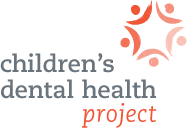The Children's Dental Health Project's blog
Let's rethink how we manage tooth decay
Last week, a New York Times article explored the risks of treating children for tooth decay under sedation, ranging from conscious sedation aimed at calming the patient or general anesthesia (GA) in a hospital operating room. Of course, it’s not always possible to avoid dental treatment under sedation, especially in the case of young children with special healthcare needs. But we wish the article addressed the fact that, in many instances, the need for sedation is a symptom of a system that has failed.
Put simply, tooth decay is a preventable condition. Our nation is not doing all it can and should to keep children healthy. Cavities are the result of dental caries, a chronic disease process that, if addressed early, can be managed without drills or the unnecessary risks associated with sedation. What’s more, dental treatment under sedation in a hospital setting is very costly. In a large Colorado children's hospital, costs for children's dental treatment in an operating room ranged from $10,000 to $15,000 per child.
We also know that treating cavities under sedation does little to address the underlying disease; about half to two-thirds of children treated for tooth decay under GA will have new cavities within 1-2 years of undergoing this high-risk treatment.
Unfortunately, our healthcare system is largely stuck in the past when it comes to dealing with this problem. With few exceptions, providers are not incentivized to prevent tooth decay or manage it as the chronic disease it is. As the Times article points out, there are tools in the toolbox:
-
Behavioral interventions like dietary counseling and motivational interviewing can encourage children and families to adopt healthy oral health habits at home
-
Dental providers, medical providers and non-clinicians can perform oral health risk assessments to identify and address risk factors before they result in dental decay
-
“Pre-cavities” can be remineralized without poking or drilling holes in a tooth
-
Antimicrobials such as silver diamine fluoride can be applied to small cavities to help stop the decay process painlessly; and
-
Minimally-invasive techniques like atraumatic therapeutic restoration (ART) or non-surgical crowns can be used to temporarily treat cavities in baby teeth while helping to prevent further decay
Of course, institutionalizing these practices requires changes in the way we manage and pay for healthcare. Currently, only a handful of state Medicaid programs pay for oral health risk assessments or utilize the electronic codes that would allow for such payment. Meanwhile, in places where services like silver diamine fluoride or other disease management techniques are paid for, the financial incentives are not as favorable to drilling and filling teeth.
And when it comes to instances where sedation is unavoidable, we don’t have a healthcare system that does enough to reduce risks. When it comes to oral health, we really still have two separate systems and two separate electronic records systems that aren't able to talk to one another. This means that dental providers typically don't have access to a patient's medical records and their physicians typically don't have access to their dental records, something that's incredibly important if dental practitioners are planning to sedate a medically-complex child or even appropriately manage diabetes and contributing oral health problems in that child’s parent.
There are encouraging signs. For example, the Centers for Medicare and Medicaid Services (CMS) are currently embarking on efforts to test how oral healthcare can be paid for so that fewer children end up needing invasive and potentially dangerous treatment under sedation. CDHP is an active partner in this effort. We hope to see more investments in both the public and private spheres to bridge the gap between medical and dental care and better incentivize services that keep children happy, healthy, and free of pain.
